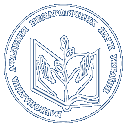- Редько, Валерій Григорович (2018) Theoretical and methodological principles of competence-activity technology of teaching foreign languages Fundamental and Applied Researches in Practice of Leading Scientific Schools, 2 (26). pp. 313-320. ISSN 2313-7525
|
Text
!!!Redko_Croatia.pdf Download (433kB) | Preview |
Abstract
In the article, the author examines and scientifically substantiates the competency-activity technology of teaching foreign languages in institutions of general secondary education. He characterizes the didactic components of this technology, defines the basic level of formation a foreign-language communicative competence of a contemporary pupils. The illustrated theoretical provisions of the technology are based on the author's scientific and educational experience, which served as the basis for the current trends in the development of school foreign language education. Under the term competency oriented teaching of foreign communication, the author understands the ability of pupils to perform foreign language means the actual task for them to communicate in everyday, educational, industrial and cultural life; the ability to use the facts of speech for the communication purposes. A pupil has a foreign language communicative competence, if he, in the conditions of direct or indirect contact, successfully fulfills the tasks of mutual understanding and interaction with the native speakers of the studied language in accordance with accepted norms and traditions. Essential characteristics of this category are considered skills appropriate to use the language in accordance with the topic of communication. Noted, that competency-activity technology promotes the learning of linguistic and socio-cultural knowledge and skills appropriate to use them in speech activities. The author outlines the scope of the main pragmatic information that pupils need to acquire during competency oriented education. Those are following: • how to organize / support foreign language communication in different ways of social and communicative conditions; • what the rules of a foreign language communicative behavior for different circumstances of communication should be; • what language units during production of expressions in different time and local situations should be guided; • which language samples in different conditions communication, in particular with representatives of different social statuses and groups, at meetings / meetings of different social directions should be used; • from which sources and in which ways they have obtain the necessary information to meet their own foreign communication needs; • how to demonstrate the flexibility of their communicative behavior and what non-verbal strategies to use in the absence of certain language experiences; • which way should they improve foreign communication experience. The main areas of the teaching foreign languages content transformation in accordance with the competence-activity technology are following: a) didactic rethinking the essence of educational material from the perspective of its expediency, accessibility, correspondence with other language communication skills of pupils of a certain age category, sufficiency to ensure their communicative intentions; b) determining the connections of the studied material with the life practices that are significant for the pupils, which is associated with the level of its pragmatism - the areas of usage in real communication conditions; c) ensuring the effective activation of linguistic material in various types of speech activity through the motivation of educational actions and the use of the optimal system of exercises and tasks and didactically appropriate auxiliary materials; d) facilitating the conscious learning by students of ways working with educational foreign language material within a certain range of concepts, phenomena, processes, objects, facts, in particular topics for communication, the content of speech material, the contents of instructions, etc. The author suggests to consider the competence-activity technology of teaching foreign language communication from several positions: a) the goals of school foreign language education; b) the features of selection and organization of the content of education; c) the features of the choice and usage methods, educational forms and means of education; d) the peculiarities of the organization of the educational process; e) features of the forms and types of control of learning outcomes.
Downloads
Downloads per month over past year
Actions (login required)
 |
View Item |




